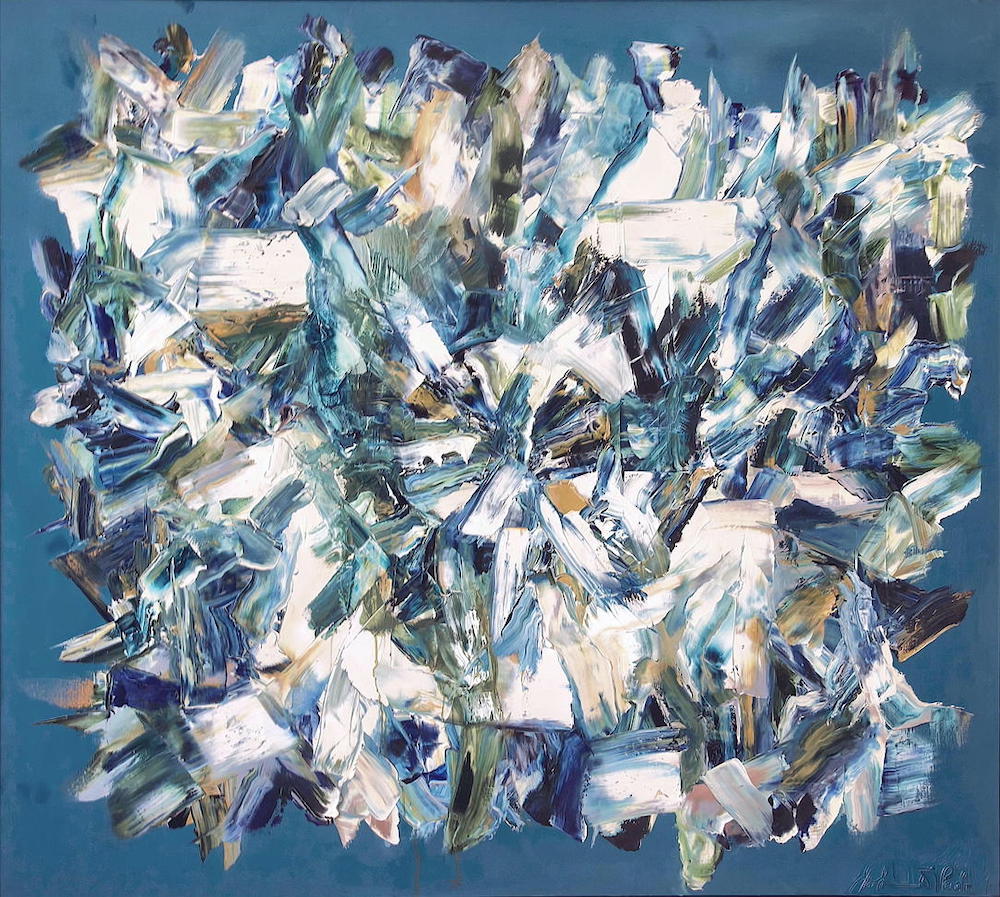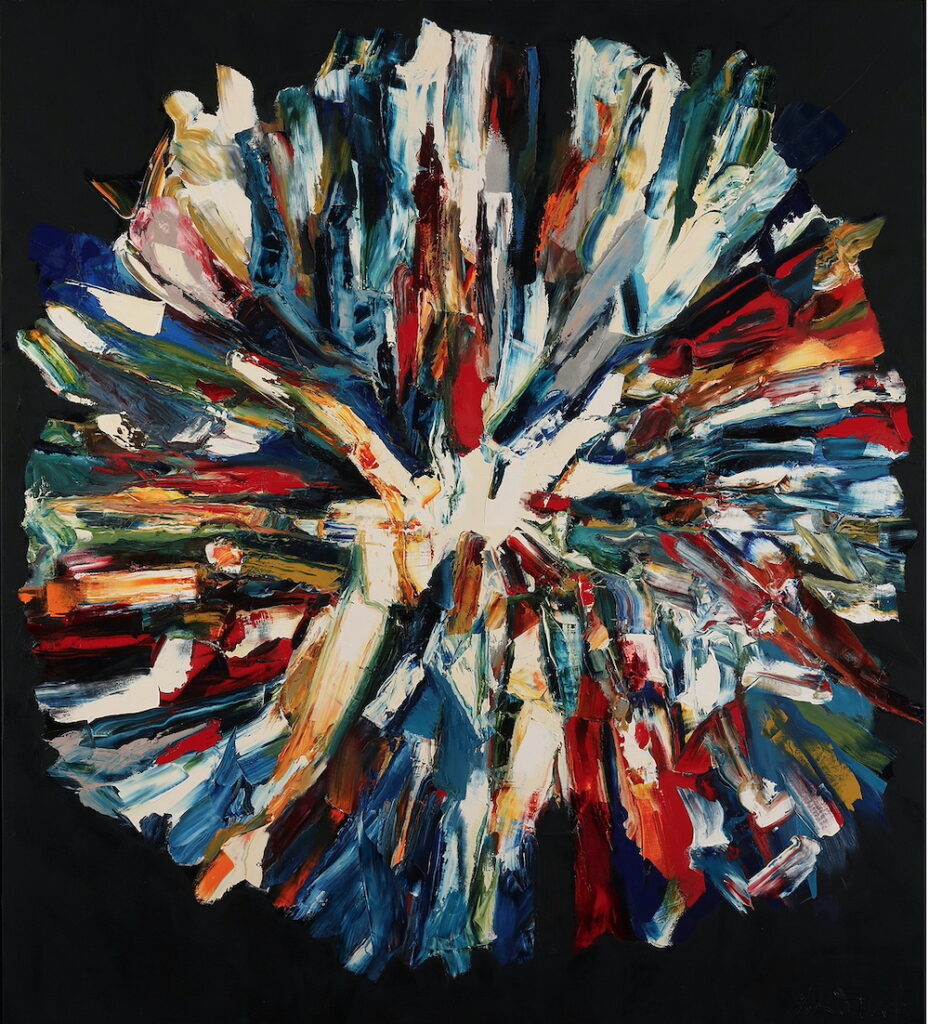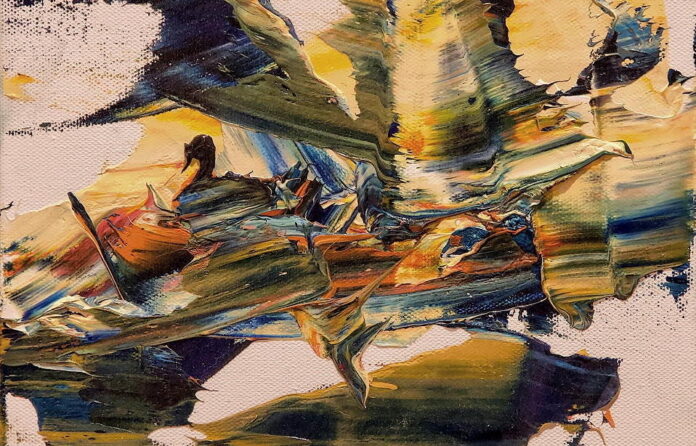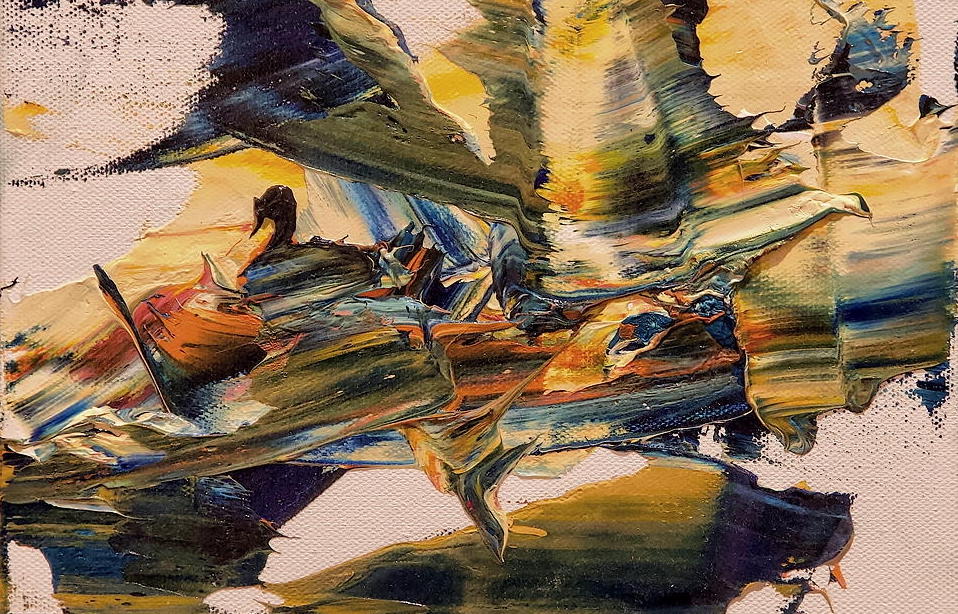Today painters do not have to go to a subject matter outside of themselves. Most modern painters work from a different source. They work from within. — Jackson Pollock
Lovers of Abstract Expressionism—i.e., of recording and conveying emotion through paint alone, without storytelling of symbolism—should not miss John DiPaolo’s latest exhibition at Dolby Chadwick Gallery in San Francisco (through June 2). DiPaolo has explored the AbEx style for 40 years; his powerful orchestrations of color and gesture, which art historian Peter Selz characterized as, “rhythmic dispositions of color and shape in space,” show the ways in which the old formalist theory of painting that dictated incessant change and evolution (and a kind of planned obsolescence) was short-sighted, narrow-minded groupthink.

Born in Brooklyn in 1946, DiPaolo studied at the School of Visual Arts, absorbing the trends of mid-1960s New York. He moved to the Bay Area in 1971 in order to attend the San Francisco Art Institute, where he studied with Jack Jefferson, Julius Hatofsky, and Sam Tchakalian, completing his graduate work at San Francisco State University, where he studied with Robert Bechtle, Helene Aylon, and Stephen DeStaebler.
His latest, untitled show, his 10th with the gallery over the last 20-plus years, comprises nine large oils on canvas and four small 8”x10” paintings (“Drifter #113,” “Drifter #117,” “Drifter “121,” “Drifter #122”) from what appears to be a large series, judging from the title, about wandering thoughts and sudden perceptions, the raw material of Abstract Expressionist practice and theory. Of it, DiPaolo says, “There is no formula, no method, just a compulsion to experiment. There’s always more that can be done because experimentation is a never-ending process.”

DiPaolo’s paintings are improvised without preliminary drawings or preconceptions, and the final forms emerge from the mysteries of the process. The artist’s mastery of gesture and form, acquired over decades, allows him to create visual chaos and then to shape and resolve it, with the finished work, with the impasto paint vigorously applied with brush and palette knife, inviting the viewer to participate kinesthetically and vicariously in the creative act.
Abstract Expressionists like Mark Rothko, Jackson Pollock, and Clyfford Still tended to evolve a recognizable signature style. DiPaolo’s imagery, however, varies from pulsing fields of painterly, tactile gestures to configurations or constellations of forms that suggest blossoms, roots, fields, waves, rocks, and trees. Still, the sense of conflict and contrast remain, from work to work. The predominant palette of black, white, gray, tan, and blue (with accents of brighter hues) is restrained, but it allows the artist to create complex pictorial structures that pulse with life, no matter what real-life objects come to the viewer’s mind, without the complications of clashing colors.

The trio of tree-trunk forms in “Totem “10” might also be costumed dancers, or puppets, as could the figures standing in the snow in “The Things That Remain.” The forms floating in the darkness in “Drifter #113,” “In Memory,” and “Phosphorus” may appear ghostly or mysterious, but they are fraught with meaning, like the characters in dreams, even if we can’t quite interpret the message. The root-ball form of “Moniker” could also depict the crown of tree branches in winter, shorn of foliage, or some new form of spiky microbial life. The tissues of interwoven all-over brushstrokes pierced by black holes in “Untitled” and “The Light Surrounding Us #2” suggest fragile, tattered relics or artifacts, their messages or images lost to time.
“A Blue Note” depicts a similar, seemingly damaged fragment of ambiguous meaning, this time set against a background of sky blue: a mountainous landscape, a battle scene, or a floral still life, or all three—a false trichotomy? DiPaolo’s powerful painting lends his works urgency; the viewer completes the creative cycle by interpreting them variously—to taste.
JOHN DIPAOLO runs through June 2. Dolby Chadwick Gallery, SF. More info here.







